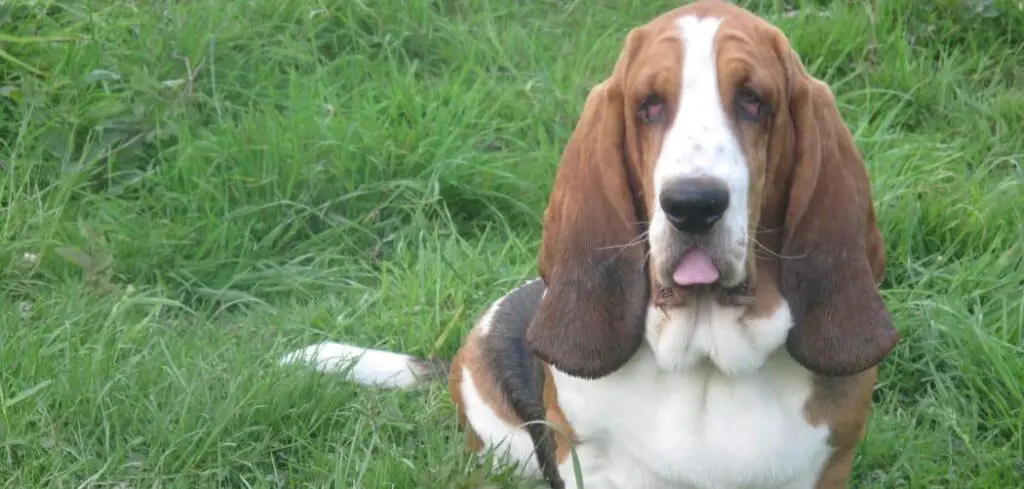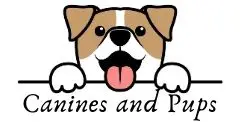Diarrhea and drooling can be distressing to a dog. While mild diarrhea is common and usually harmless, its frequency, intensity, and occurrence alongside other symptoms raise concern.
It is helpful to understand what causes diarrhea and drooling in your dog and when to seek medical attention.
We outline the potential causes of dog diarrhea and drooling as well as what to do and when to seek help.
Here’s why dog diarrhea and drooling occurs
Dog diarrhea and drooling can occur together due to a number of illnesses and health issues that cause these symptoms which include gastrointestinal infections, diet, food allergies, medication side effects, illness, stress, and poisoning.

Dog drooling and diarrhea
Drooling in dogs, also known as hypersalivation, is the excessive production of saliva in the mouth. It can be a normal response to certain triggers, such as the sight or smell of food, but it can also be a symptom of an underlying health condition.
Drooling can be caused by nausea, dental problems, poisoning, certain medications, a natural characteristic of a dog breed, and behavioral issues like anxiety.
Diarrhea in dogs refers to the passing of loose, watery stools, several times a day and is a symptom of different diseases or conditions.
Dog diarrhea and drooling are both common symptoms that can occur in dogs, often at the same time due to underlying health conditions.
In some cases, these symptoms can be related. For example, if a dog has eaten something toxic or indigestible, it can cause both symptoms.
Is it normal for dogs to have diarrhea and drool?
It is not normal for dogs to have diarrhea and drooling but also not uncommon. It is normal for a dog to experience occasional diarrhea or drooling, such as after eating something they shouldn’t have, or in response to certain triggers, like the smell of food.
However, if a dog is experiencing diarrhea and drooling at the same time, it may be a symptom of an underlying health condition.
Causes of dog diarrhea and drooling
Gastrointestinal infections
Bacterial, viral, or parasitic infections can cause inflammation in the stomach and intestines, leading to diarrhea and drooling.
These infections can be caused by a variety of different microorganisms, including bacterial and viral infections as well as intestinal parasites such as roundworms and tapeworms.
These types of infections can be contracted through contact with contaminated food or water, or by contact with infected animals.
Symptoms of gastrointestinal infection include vomiting, fever, abdominal pain, and weight loss.
Dietary issues
Eating foods that are not part of their normal diet or that are spoiled can cause diarrhea and drooling in dogs.
This can happen if a dog accidentally ingests something they shouldn’t have, such as garbage or spoiled food.
This can also occur if a dog is suddenly switched to a new type of food without proper transition. Symptoms may also include vomiting and abdominal discomfort.
Food allergies or sensitivities
Some dogs may be allergic or sensitive to certain ingredients in their food, which can cause digestive issues such as diarrhea and drooling.
Common food allergens for dogs include proteins like chicken, beef, and dairy products. These allergies can develop at any time in a dog’s life.
The symptoms that can accompany diarrhea and drooling include itching, hives, and other skin problems.
Medication side effects
Certain medications can have side effects that affect the digestive system, and cause symptoms such as diarrhea and drooling.
Antibiotics, for example, can disrupt the balance of bacteria in the gut and cause diarrhea. Other medications like non-steroidal anti-inflammatory drugs (NSAIDs) can also cause stomach ulcers and gut bleeding which can lead to bloody diarrhea and/or drooling.
Illness
Many diseases and conditions cause diarrhea and drooling as symptoms. These illnesses include organ dysfunction, that is, kidney or liver disease, inflammatory bowel syndrome, colitis, or cancer.
Pancreatitis which is the inflammation of the pancreas can lead to diarrhea and drooling as well as other symptoms such as abdominal pain.
Related: Dog diarrhea and panting (Explained)
Stress or anxiety
Dogs that experience high levels of stress or anxiety may develop diarrhea and drooling as a result.
This can happen in response to changes in their environment, such as moving to a new home or the arrival of a new pet or family member.
It can also happen in response to certain events, such as loud noises or thunderstorms.
Poisoning
Exposure to certain toxins, such as pesticides or heavy metals, can cause diarrhea and drooling. The toxins can be ingested, inhaled, or absorbed through the skin causing poisoning.
Other symptoms that may occur include vomiting, tremors, and seizures. It is important to keep dogs away from known toxins and seek veterinary attention if exposure is suspected.
Old dog throwing up and drooling
When an older dog starts throwing up and drooling, it can be a sign of several underlying health issues. Common causes include gastrointestinal upset, dental disease, kidney or liver problems, toxins, or even vestibular disease, which affects balance and coordination.
Age-related weakening of the immune system and organs can make older dogs more vulnerable to infections and metabolic disorders, all of which can trigger nausea, vomiting, and excessive drooling (called ptyalism).
If an older dog shows these symptoms, it’s important to consult a veterinarian promptly because some causes, such as organ failure or poisoning, can become serious quickly.
Puppy threw up and drooling
When a puppy vomits and drools, it’s often related to an upset stomach, dietary indiscretion (eating something inappropriate), or a mild viral infection like parvovirus (though serious infections will usually involve more symptoms like diarrhea and lethargy).
Puppies are curious and often chew on or ingest objects they shouldn’t, which can cause irritation to the gastrointestinal tract and lead to vomiting and drooling. Worm infestations are also a common cause.
However, because puppies are more fragile than adult dogs, vomiting and drooling can escalate quickly into dehydration, so it’s wise to monitor them closely and seek veterinary care if symptoms persist or worsen.
Dog throwing up, drooling, and shaking
A dog showing vomiting, drooling, and shaking at the same time could be experiencing a serious condition such as poisoning, severe pain (such as from pancreatitis), or neurological issues.
Shaking can indicate that the dog is in distress, has a fever, or is suffering from something more serious like a toxin exposure (for example, ingesting chocolate, xylitol, or certain plants).
Other possibilities include severe nausea, anxiety, or even a seizure disorder.
Because this combination of symptoms suggests the dog’s system is under significant stress, it’s very important to seek immediate veterinary attention to determine the cause and begin treatment.
Will an upset stomach make a dog drool?
Yes, an upset stomach can definitely cause a dog to drool excessively. When a dog feels nauseous, the salivary glands often produce more saliva, which can lead to noticeable drooling.
This is similar to how people sometimes salivate more when they are about to vomit.
Dogs with upset stomachs may also lick their lips frequently, gulp, and show other signs of discomfort such as pacing or restlessness.
Causes of an upset stomach include sudden changes in diet, eating spoiled food, gastrointestinal infections, or stress.
Mild cases may resolve on their own, but ongoing or severe symptoms should be evaluated by a veterinarian.
Do dogs drool when they are sick?
Yes, dogs often drool when they are sick. Excessive drooling can be a response to nausea, oral pain (such as from a dental abscess or broken tooth), throat irritation, or systemic illness affecting organs like the liver or kidneys.
Some infections and illnesses make swallowing difficult or cause an overproduction of saliva.
Certain toxins and medications can also trigger drooling. In short-nosed breeds (like Bulldogs or Pugs), drooling can sometimes be more noticeable during any illness due to their anatomy.
Persistent or unusual drooling, especially when accompanied by other symptoms like vomiting, lethargy, or shaking, should prompt a visit to the veterinarian.
Dog diarrhea and drooling: What to do and when to seek help
Dog diarrhea and drooling: What to do and when to seek help
If your dog is experiencing both diarrhea and drooling, it is important to seek veterinary care as soon as possible.
Here are other signs that indicate that you should see a veterinarian immediately:
Severe or bloody diarrhea: If your dog’s diarrhea is severe or if there is blood or mucus in the stool, this could be a sign of a serious underlying condition and requires immediate veterinary attention.
Other symptoms: Other symptoms may accompany diarrhea including vomiting. If your dog is vomiting along with diarrhea, this can quickly lead to dehydration and other complications. This requires immediate medical attention.
Other symptoms to look out for include lethargy, lack of appetite, breathing difficulties, signs of pain or discomfort, fever, and signs of dehydration, such as a dry nose or mouth and sunken eyes.
If your dog is a puppy or an older dog: Puppies and older are generally more vulnerable than healthy adult dogs so delaying treatment could result in their condition worsening or becoming more difficult to treat. Therefore, it is essential to seek immediate medical care.
Looking for comprehensive information on dog diarrhea and how to effectively manage it? Our comprehensive guide on dog diarrhea covers everything you need to know. Click here to dive deeper into this crucial topic and learn how to effectively manage this common canine issue.
